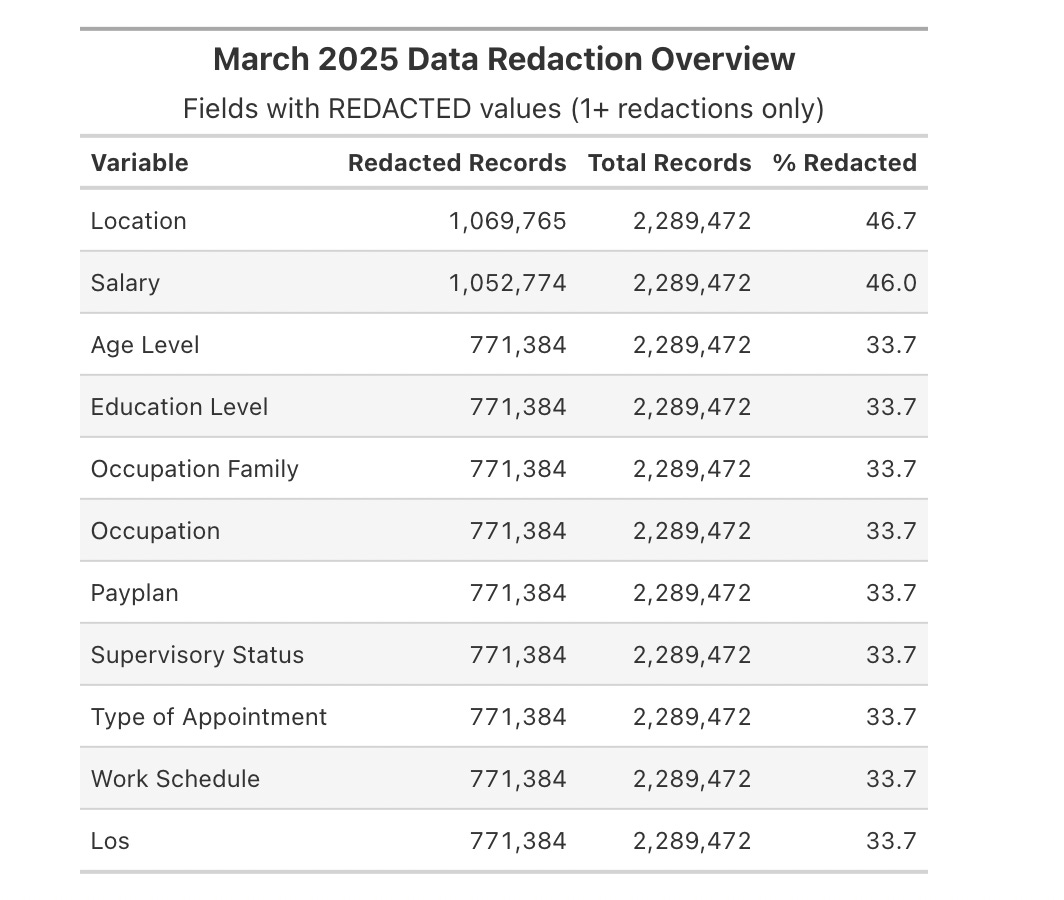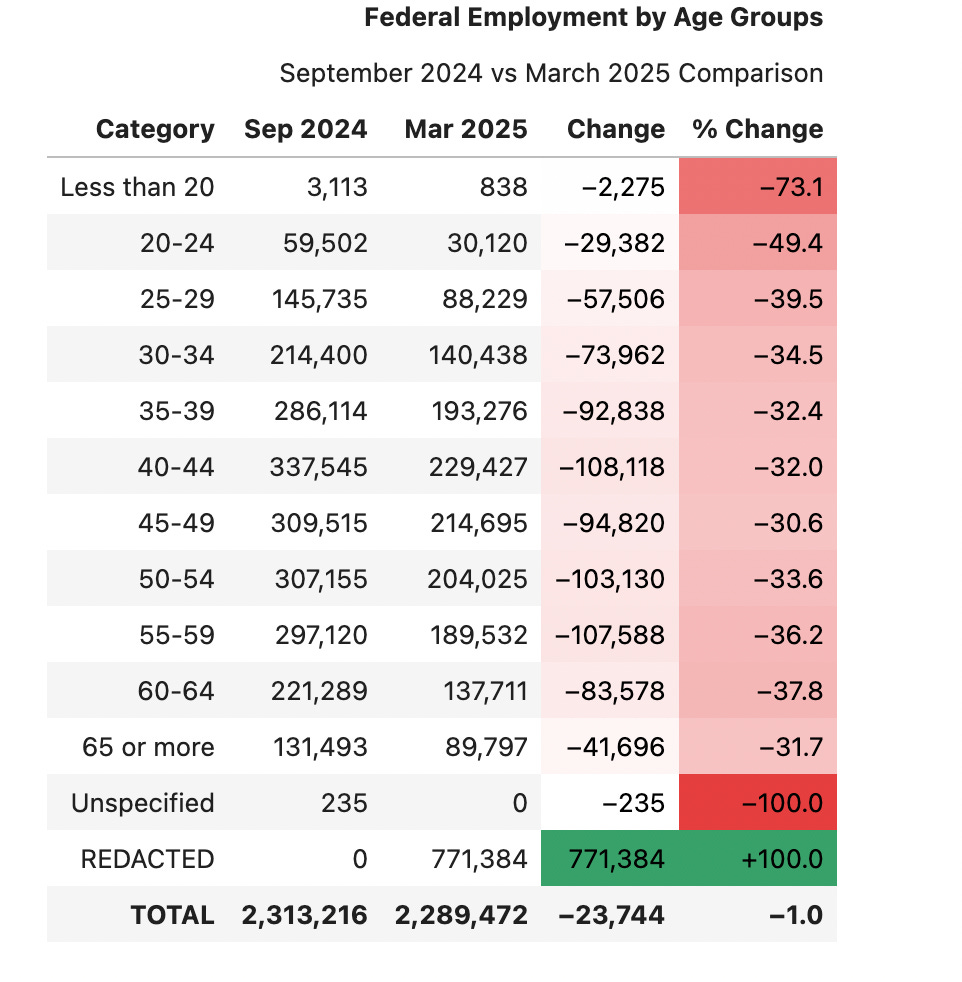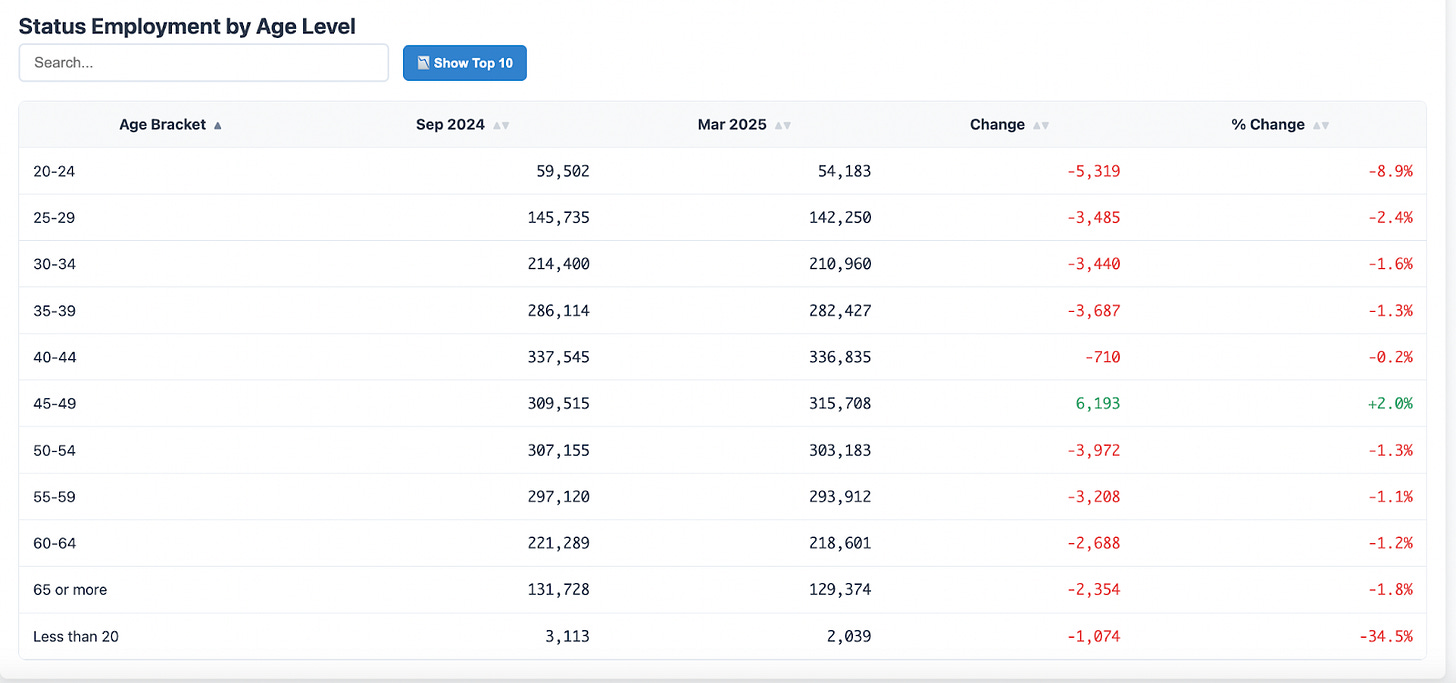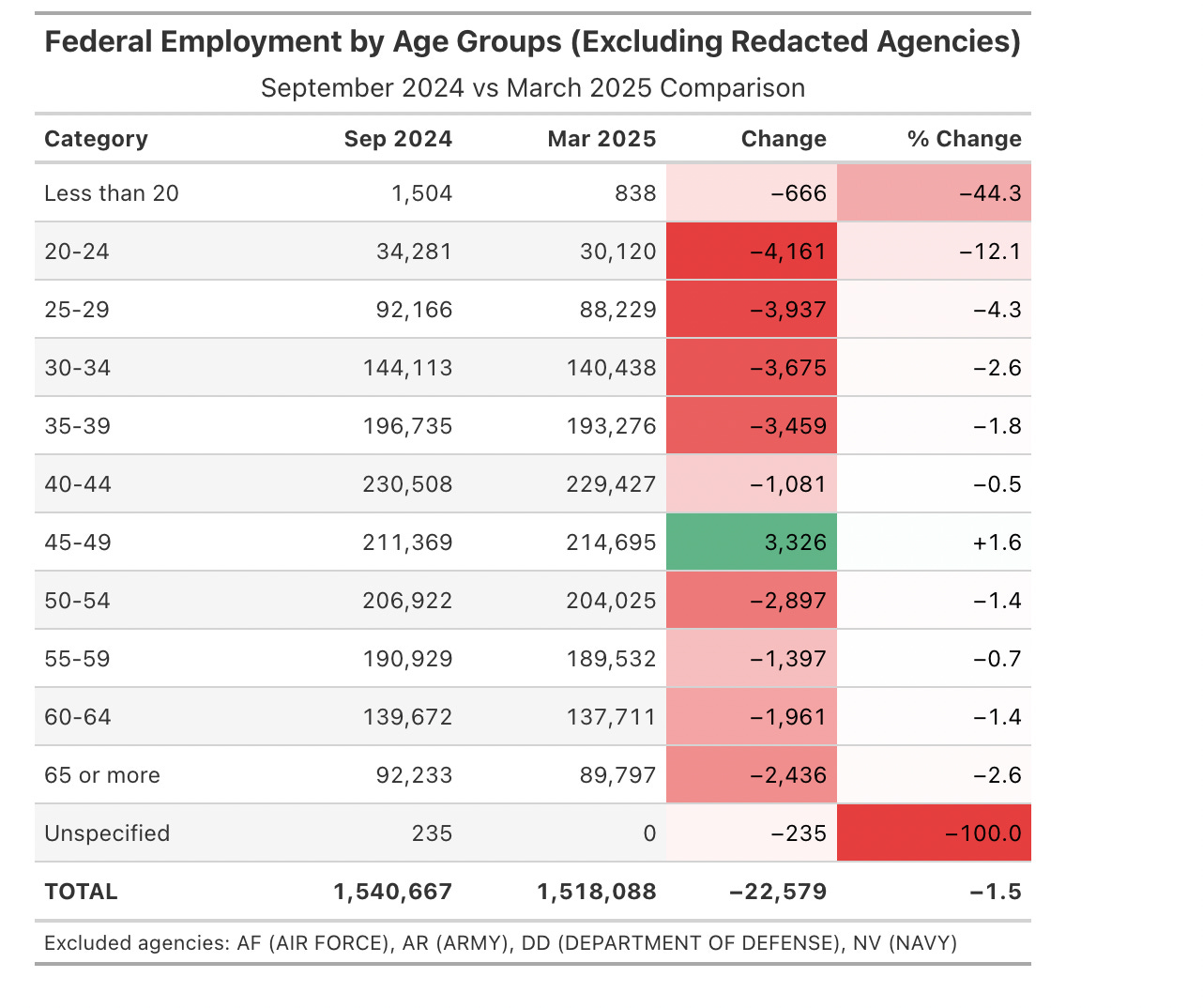Yesterday, OPM released updated FedScope employment data. That's the authoritative data source for federal civilian employee data across agencies. The new data is from March 2025. This is notable, because previously, the most recent data was from September 2024, prior to inauguration and the many actions reshaping the federal workforce.
I wanted this data so much that I tried to FOIA it recently, so I was really happy to see it released.
However, there are two issues to be aware of if you're trying to use it to get a handle on what's going on with federal employment, especially if you want to make comparisons with previous data sets.
Two Big Problems
1. People on Administrative Leave Are Still Counted as Current Employees
From the documentation: The March 2025 does not reflect expected Federal workforce reshaping activities. Employees on administrative leave pending resignation, retirement, or release are identified as current employees. This includes employees who took the Deferred Resignation Program (DRP).
Because so many people are on administrative leave right now, you really can't see what's actually going on.
If this data tracking issue doesn't change, it won't be possible to know the real story on federal employment or agency capacity until the end of the fiscal year. And it isn't just voters or researchers who can't access the data—Congress can’t either. There is simply no government-wide source of data which can tell us how many people from each agency or job category are left.
2. The DoD Is Almost Entirely Redacted in Person-Level Data
There are two ways you can consume FedScope data: via the summary tables and the person-level data. I usually work with person-level data, in part because previously the summary data option has involved the Cognos front end, and I find that difficult to work with.
But depending on what you want, the summary data this time around is potentially more useful.
This is because all of the DoD data (the Air Force, Army, Navy, and Department of Defense) is now redacted for everything except agency and subagency in the person-level data. This is new—in previous releases, we could see occupations, pay plans, and other details for DoD employees. There were always excluded agencies, but not DoD overall. This is 33.7% of the FedScope data.

Salary and location are redacted at higher rates—meaning they affect non-DoD agencies too—but those percentages, beyond the new DoD issue, are similar to what we've seen before: there was previously some redaction of these fields. The big change is this blanket redaction of DoD data.
Additionally, the March 2025 snapshot is described as preliminary while OPM works with agencies to ensure data quality. I'm not sure what this means in practice, except to take the data in general with a grain of salt?
What You Can Do with This Data
Option 1: Use the Summary Data (No Redactions!)
The good news is that the summary data doesn't have any redactions: it includes everyone, with DoD employees properly counted in each category. So if you just want data rolled up by occupation, age, education, or a few other categories, you can still get that.
I have it here if you don't want to go through the released .txt files yourself. However, I dropped years of service and salary data from these, so if you want those back, or you want to roll the data up further, like to the agency level, you'll need to get it yourself1.
Option 2: Work Around the Redactions in Person-Level Data
But if you need the granularity of person-level data, like if you want to see education data crossed with agency and occupation, you'll have to work around the DoD redactions.
However, since we know exactly which agencies have redacted data (Air Force, Army, Defense Department, Navy), you can exclude them from all time periods to make clean comparisons with previous data.
Here's what the age data, for instance, looks like when you exclude DoD agencies from both periods:
What You Don't Want To Do
You don’t want to roll up person-level data across time periods without accounting for DoD. For instance, if you just compare March 2025 to September 2024 on any category besides subagency using the person-level data, it'll look like federal employment dropped dramatically in every category—but that's mostly because 771,384 DoD employees are now hidden in the "REDACTED" row.

And this is the case for any of the categories that you could group by. The only way to compare categories across period is to exclude DoD.
When We Look At The Data, What Do We Actually See?
There was a decline of about 1%, or ~24,000 employees, from September 2024 to to March 2025.
The only high-level data where we're seeing double-digit declines anywhere so far is in excepted service and non-permanent employees, as well as a 35% decline in under-20-year-olds. There's also a 9.9% decline in GS-5s.
Everything else is a lot smaller, so far. But we’ll see how this changes in the next fiscal year.
Resources:
Interactive dashboard for quick comparisons (summary data)
Jupyter notebook for person-level analysis with redaction workarounds
Full repository with 140+ million federal employment records (1998-2025)
More on federal employment data



